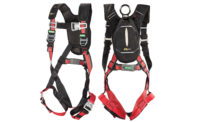It’s an understatement to simply say that the safety manager’s playing field is much more complicated these days. More often than not, first responders can’t be sure if the threat of additional damage and injury is still present when they arrive and it can be harder than ever to make that determination. That’s especially true in the event of possible intentional incidents.
“Scattered†assets
Complicating this situation even further is the geographic size of many plant emergency response playing fields. Larger facilities are often quite spread out with first response assets, like emergency showers and eyewashes, “scattered†to all corners of the operation. Obviously, decentralized placement is a necessary step in assuring immediate assistance to injured workers. But it creates challenges for those charged with providing immediate follow-on care to the injured.
The safety staff’s responsibility for administering immediate and follow-on aid, therefore, requires immediate notification of any accident event, regardless of its location. In significant sized facilities, this communication imperative is most often addressed through the use of centralized monitoring stations, where electro-mechanical telltale devices advise safety and emergency staffs that drench showers or eyewashes have been activated. Until recently, virtually all of these monitoring systems have been hard-wired installations. In practicality, hard-wired monitoring systems are expensive to install, with conduit installation alone costing as much as $50 per foot. And because typical hard-wired installations have exposed componentry and wiring, they can also be prone to the normal frailties and failures that can occur in any industrial environment.
Centralized and wireless
Recent advancements in wireless technology have been incorporated into safety monitoring systems, an application that is gaining wide acceptance because of its significant cost and operational benefits. Wireless safety monitoring systems bring intelligent, reliable and cost-effective communication technologies to emergency safety showers and eyewashes. Multiple shower and eyewash installations can be integrated into a single system, using modules that wirelessly connect to virtually any brand of standard emergency equipment and report activation to a centralized control location.Typically, the range of packaged systems is about 1,500 feet, with up to 32 showers and/or eyewashes monitored from a single location. And, when properly installed, multiple independent systems can be operated in close proximity without interference.
At each emergency shower or eyewash location, an ultra high frequency radio transmitter is connected to a safety sensor, which is, in turn, attached to the equipment. When the shower or eyewash is activated, the sensor signals the transmitter to broadcast an accident signal. A receiving station identifies the unique signal from the transmitter and issues an immediate alert identifying the location of the accident. Annunciation of the accident can be through a monitor integral to the centralized receiving station, relay outputs in the receiving station, or other existing user control systems. This allows for tremendous flexibility in integrating wireless technology into existing communications systems.
Transmitting the data
In system use, the ultra high frequency radio transmitter is generally referred to as a data transmission module (DTM). As mentioned, DTMs are located at each emergency shower or eyewash and communicate wirelessly with a centrally located receiver. Packaged systems typically provide for full-system calibration to determine optimum local performance capabilities and wireless unit positioning. Obviously, proper placement of the wireless components is important, as is the need to locate them outside of ready access to avoid curiosity and tampering concerns.In operation, the receiver generates an alarm when a DTM detects emergency equipment in operation; the DTM is connected to and is typically activated by a flow switch or a proximity switch. Using ultra high frequency radio communication (RF), the DTM modules report emergency equipment operation immediately. The DTM broadcasts the “change of state†of the sensor and its unique identity number for monitoring by a Data Receiver Module (DRM) or Data Monitoring Module (DMM).
Using the data monitoring module (DMM) to pick up DTM transmissions, dual relays provide for external annunciation, and an RS232/485 link allows for transfer of information to other existing computerized systems, when required.
Hardware “handshakingâ€
Beyond the aforementioned cost-of-installation benefits, solid-state wireless emergency equipment monitoring offers other significant benefits versus traditional hard-wired products. Many wireless monitoring systems use advanced RF (radio frequency) technologies that also continuously monitor system integrity, status and operation. That’s a very important point. Unlike most hard-wired installations, packaged solid-state systems feature constant “handshaking†between components. To ensure that each DTM remains “visible†to the DRM or DMM module to which it has been programmed, a “heartbeat†signal is sent — usually about every two minutes — from the DTM. The DRM/DMM is anticipating this periodic signal and will raise a “loss of communication†alarm if contact is lost or not established.Packaged systems typically also include two-way RF communication between DTM and DRM/DMM. This facilitates the handshake between DTM and DRM/DMM modules. In the case of a missed DTM “heartbeat,†the errant DTM has no acknowledgement from the DRM/DMM and “retries,†to avoid generation of a nuisance alarm. Along with each DTM “heartbeat†usually comes battery life information. This is used to generate a low power warning, at the control panel, several months before battery depletion under normal “heartbeat†conditions.
Wireless monitoring helps first response aid to be rapidly directed to the correct location, with maximum cost and operational effectiveness. And, for those systems that use a 902-928Mhz spread spectrum operational frequency, there are no licensing requirements. Welcome to the future — wireless central monitoring systems for safety equipment are a great example of using technology to advance the cause of industrial safety.
